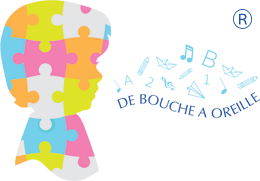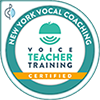
Autism Spectrum Disorder
What is Autism?
Autism, also known as Autism Spectrum Disorder (ASD), is an umbrella term used to describe a range of complex disorders that affect brain development. It can occur in all ethnic and socioeconomic groups.Symptoms of Autism typically appear at birth or very early in a child’s development (at age 3), although they may go unrecognized. Other children with Autism may appear to develop typically before age 1 or 2 then regress suddenly, thus losing previously gained language or social skills. In that case, ASD can be detected at 18 months or younger.
The vast majority of cases with Autism are hitherto idiopathic, meaning the causes remain unknown, with current studies leaning towards a combination of genetic and environmental influencing factors.
Autism can vary widely in range of severity and onset. There is not one Autism but many subtypes. Each person with ASD can have a distinct set of strengths and challenges, ergo the use of the word “spectrum”.
In a nutshell, very early in a child’s life, Autism signs are characterized by impairments in social interaction and social communication in addition to restricted and repetitive behaviors that persist and interfere with daily living.
What are the clinical signs?
In general, parents of children with ASD often observe difficulties in the following categories:-
In social interaction:
- Avoidance of eye contact.
- Few or no big smiles or other warm, joyful, and engaging expressions by 6 months.
- Little or no response to name by 12 months.
- Little or no back-and-forth gestures such as pointing, showing, reaching, or waving by 12 months.
- Preference for solitude and feeling of being overwhelmed when overloaded by people.
- Insensitivity to other people’s emotions and feelings and trouble talking about own feelings.
- Difficulty playing with other children of the same age.
- Difficulty forming friendships with little interest in seeking comfort from other people.
- Little understanding of personal space or appropriate distance between two people.
-
In social communication:
-
Peculiarities in language development:
- Little or no babbling by 12 months.
- Very few or absence of words by 16 months.
- Loss of previously acquired speech, babbling or social skills by 18 months.
- Very few or no meaningful two-word phrases by 24 months.
- Delay in speech and language.
- Fairly good language skills but difficulties understanding expectations within conversation. Some individuals might stick with one topic of conversation for too long or talk a lot about something they really like rather than have a back-and-forth conversation with someone.
- Limited or no speech. Some individuals with ASD are nonverbal.
- Word or phrase repetitions also known as echolalia.
- Giving unrelated answers to questions.
- Little respect to turn taking during interaction and conversation.
- Pronoun reversals (“you” instead of “I”).
- Flat, robot-like, or sing-song voice.
- Difficulty understanding jokes, sarcasm, or teasing.
- Limited imitation and difficulties in pretend and symbolic play.
-
-
In behavior:
- Repetitive body movements (e.g. rocking, flapping, running back and forth).
- Repetitive motions with objects (e.g. spinning wheels, shaking sticks).
- Staring at lights or spinning objects.
- Ritualistic behaviors (e.g. lining up objects, repeatedly touching objects in a set order).
- Narrow or extreme interests in specific topics or objects.
- Need for unvarying routine/resistance to change (e.g. same daily schedule, meal menu, clothes, route to school).
- Hyper or hyposensitivity to sound, smell, taste, look or feel.
-
Other signs may include:
- Hyperactivity (very active).
- Impulsivity (acting before thinking).
- Little awareness of danger.
- Short attention.
- Aggression and/or causing self-injury.
- Unusual eating and/or sleeping habits.
- Unusual mood or emotional reactions.
Some development peculiarities:
Children develop at their own pace and at different rates in different areas. While children with Autism may have delays in social communication and language as well as learning skills, they might show good or even excellent abilities at assembling puzzles or surfing the computer and might even acquire a hard skill before learning an easy one (example: reading words before recognizing letter sounds). Nonetheless, these kids will still show problems with basic social activities like having conservations, making friends, or even playing a simple social board game.
How to act?
When a child shows signs of Autism, parents should consider taking the following steps in confirming or ruling out a diagnosis:
- Consulting a neuro/pediatrician or a child psychiatrist to discuss concerns: parents’ observations are crucial at this stage as they know their child best and will convey accurate developmental issues that might go unnoticed during consultation.
-
Getting an initial evaluation: once the need for an evaluation is determined by the doctor, a multidisciplinary assessment is recommended for a full appreciation of the child’ strengths, challenges and needs in different areas (cognitive function, speech and communication, gross and fine motor, social and emotional, physical, visual and auditory). The professional team mainly consists of:
- A speech and language therapist to assess social communication skills as well as language skills.
- An occupational or a psychomotor therapist to assess fine and gross motor skills as well as body and physical communication.
- A psychologist to assess intelligence and cognitive skills (this will include talents such as retaining maps, locations, art, music and high functioning abilities [ex. visual and/or auditory memory, reading, writing, etc.]).
- Building an individualized therapy plan: the assessment results will be helpful in developing a therapy plan and tracking progress. This means that several areas may be assessed by different professionals to obtain a complete, full picture of the child’s development.
- Implementing research-based and evidence-based interventions as well as launching parental coaching sessions that on the one hand will instill strategies that improve parent-child communication and on the other hand promote a supportive and inclusive environment.


